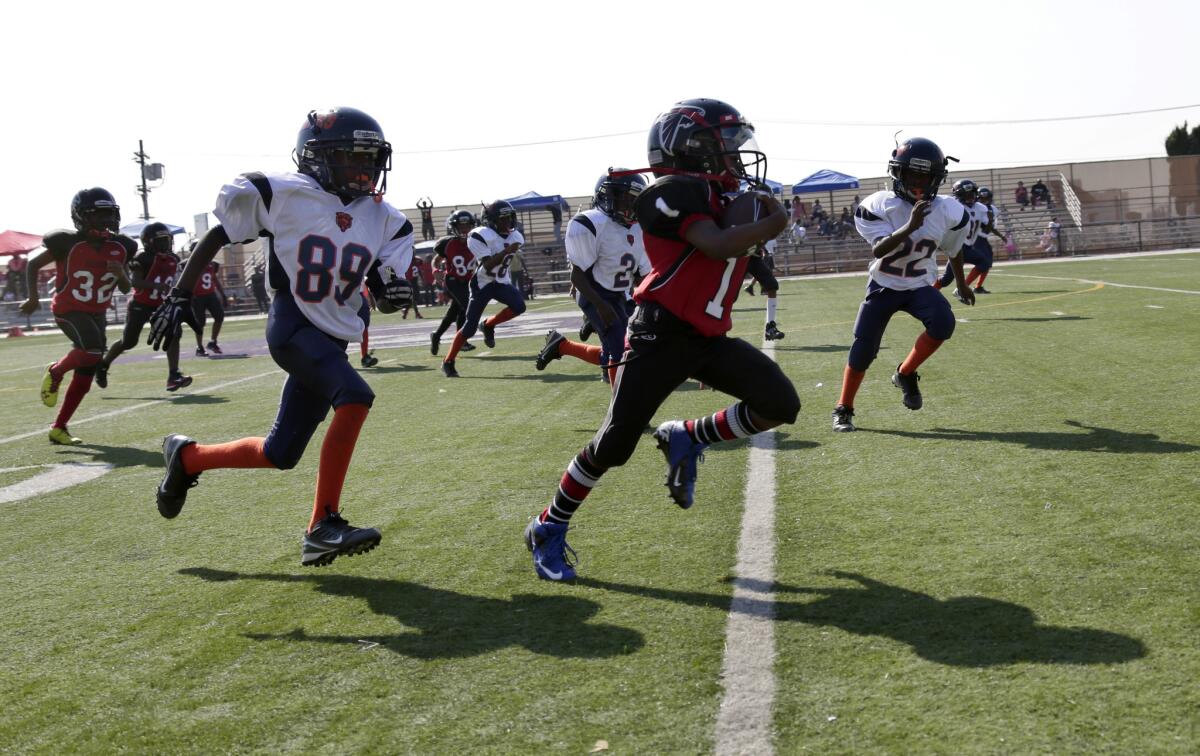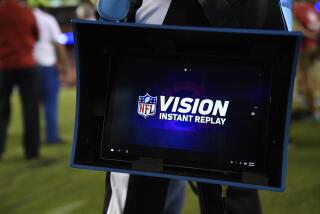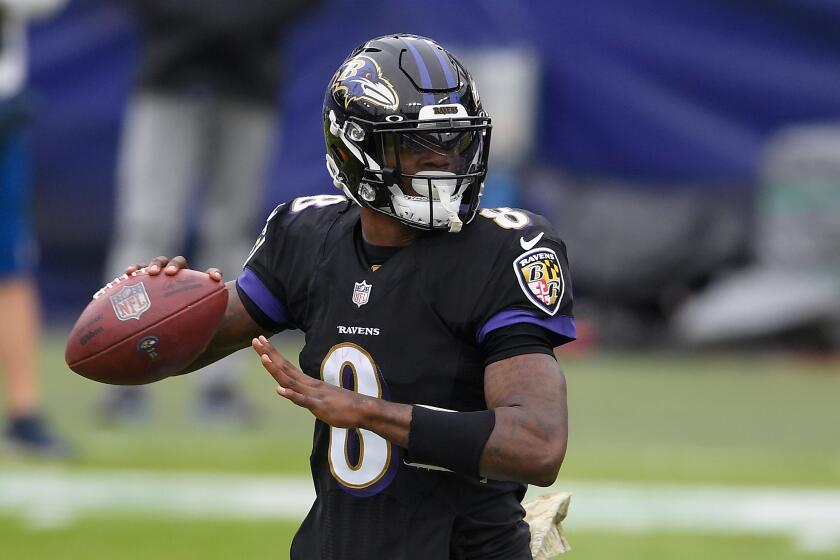Column: Football and kids: Are pediatricians too tolerant about youth tackling?

Good wholesome fun, or a threat to kids’ health? The LAPD-coached youth football team Watts Bears (in white) pursue a member of the Southern California Falcons during a 2013 game. The players are 7 to 9 years old.
This is the week that our national fascination with pro football reaches its annual climax. The run-up to the Super Bowl is also a good time to ponder the effects of the game on its youngest participants, some of whom start tackling each other as early as age 5.
One would think that the evidence of long-term illness and injury from the violence of even pre-school football would have pediatricians up in arms. Sadly, as Kathleen E. Bachynski of Columbia University’s School of Public Health documents in the New England Journal of Medicine, the doctors are shockingly tolerant of the tide of injuries in youth football. What’s worse, as a group they seem to be getting more tolerant.
Repetitive trauma to the head is of no clear benefit to the game of football or the health of football players.
— The American Academy of Pediatrics states the obvious
Bachynski’s evidence is a policy statement on tackling in youth football issued last October by the American Academy of Pediatrics.
“But rather than recommend that tackling be eliminated in youth football,” she observes, “the AAP committee primarily proposed enhancing adult supervision of the sport.”
Make no mistake: The connection between youth football and the pro game are significant. More than 3 million American boys play tackle football at the high school level or below. It’s the start of a training regime that can lead to college football or the National Football League, and it builds fanship. That ensures that football remains ingrained in American culture, which is worth tens of billions of dollars to the NFL and major colleges.
But kids are the most vulnerable to football injuries, especially head and neck injuries, which can have lifelong consequences and account for up to 13% of all football injuries for school-age players. At least 11 high school students died playing football last year, Bachynski reports, which may have prompted the pediatricians’ statement.
The public is becoming more aware of the long-term toll of football injuries, in part because of dismal publicity coming out of the pro ranks. News broke this week that former Oakland Raiders Quarterback Ken Stabler, who died of cancer last July and could be voted into the pro football Hall of Fame Saturday, suffered from chronic traumatic encephalopathy, a degenerative brain disease associated with repeated concussions. CTE only can be diagnosed after death, but appears to be widespread among former NFL players.
Former Pittsburgh Steelers receiver Antwaan Randle El spoke out last month about the toll that his nine-year NFL career took on his physical and neurological health: He’s hobbled walking up and down stairs, and at age 36 is already showing signs of memory loss. “Right now,” he told the Pittsburgh Post-Gazette, “I wouldn’t be surprised if football isn’t around in 20, 25 years.”
The pediatricians seem to be missing in action as discussion of youth football injuries takes hold. The academy’s statement on tackling was curiously equivocal. “Repetitive trauma to the head is of no clear benefit to the game of football or the health of football players,” the statement acknowledged, fairly obviously. But it stopped well short of advising, as some medical professionals have done, that tackling be barred entirely from football below a certain age. (Some authorities would ban it for kids younger than 12 or 15.)
The pediatricians argue that banning youth tackling entirely might lead to worse injuries later on, as kids wouldn’t have learned safe tackling techniques before they moved into tackle football, say in college. They also urged that “officials and coaches ... ensure proper enforcement of the rules of the game,” such as barring spear tackling in which the head is used as battering ram and which is the cause of “a significant number of concussions and catastrophic injuries.”
“There is a culture,” the academy statement says, “of tolerance of head first, illegal hits. This culture has to change.” The statement also advises more effort at strengthening the neck muscles of young athletes to safeguard the head and upper spine, and having trainers on hand during games and practices. And the pediatricians made the obligatory bow to the notion that “football is a generally safe sport that carries with it...substantial benefits, including regular exercise and “social and academic outcomes that outweigh the risks involved.”
Interestingly, the latest statement doesn’t go as far as earlier medical judgments about youth football. In 1956, the pediatrician’s group advised that because of the risk for bone and joint injury, for children under 12, “body contact sports, particularly wrestling, tackle football, and boxing should be avoided in the sports program.”
But even in that era, the allure of football as a character-building activity was strong. In 1956, the American Medical Assn.’s committee on sports injuries observed that “football can be a killer and a maimer, but for the player it is also a wholesome and valuable experience that — like life itself — can be made safer.”
Bachynski argues that the medical profession is too indulgent about youth tackle football, especially when it says, as the pediatrics academy does, that “participants in football must decide whether the potential health risks ... are outweighed by the recreational benefits associated with proper tackling.”
She notes, first, that it’s unclear whether “proper tackling” can sufficiently reduce the risks to children. Moreover, children aren’t equipped to make the required decision — and their parents may not either.
Doctors “have a role to play in shifting the culture when it results in harm to children’s long-term health,” she writes. “Recommendations that prioritize children’s health should extend beyond supervision of risky activities to include counseling against them.”
Keep up to date with Michael Hiltzik. Follow @hiltzikm on Twitter, see our Facebook page, or email [email protected].
More to Read
Inside the business of entertainment
The Wide Shot brings you news, analysis and insights on everything from streaming wars to production — and what it all means for the future.
You may occasionally receive promotional content from the Los Angeles Times.











